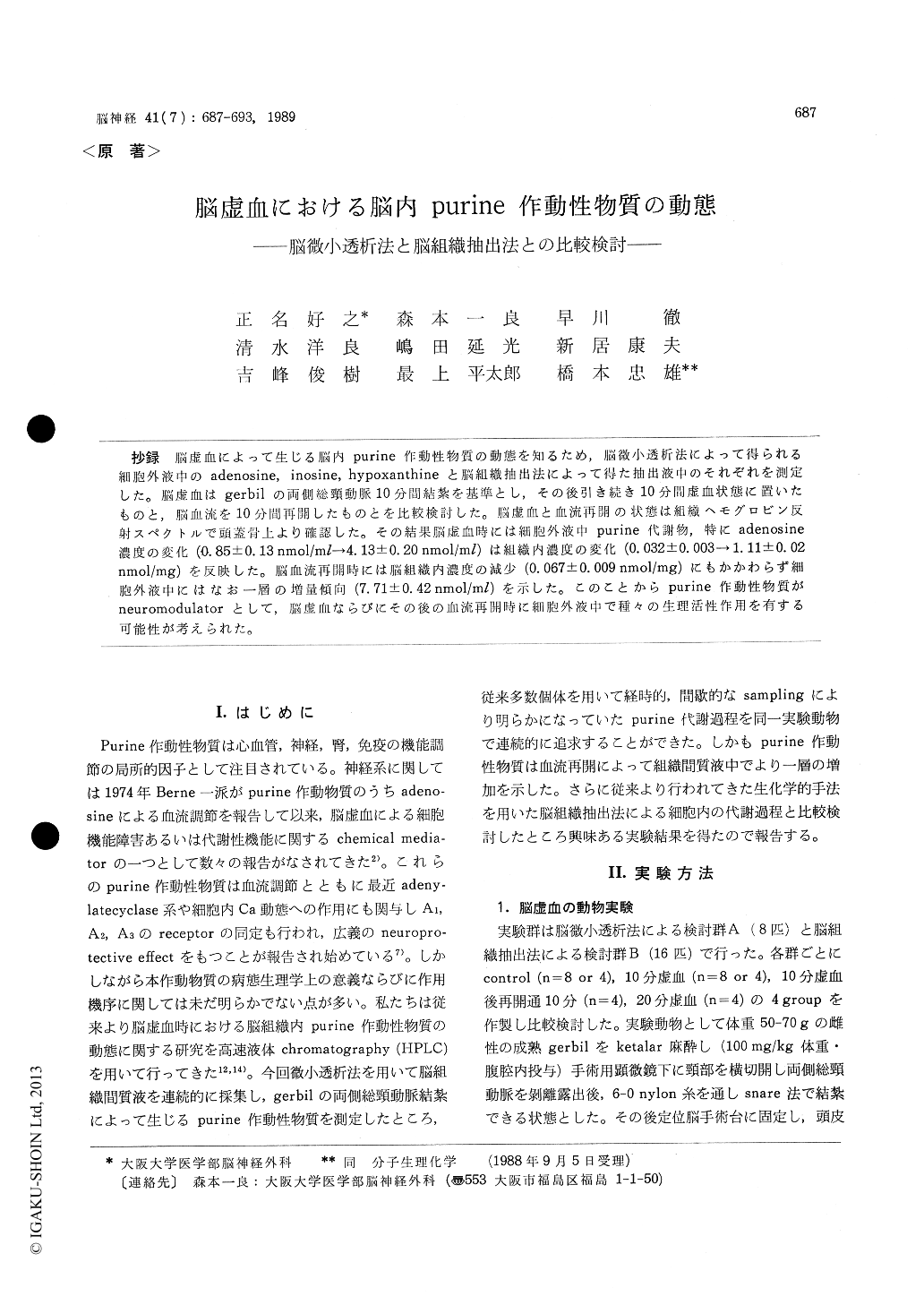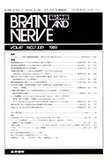Japanese
English
- 有料閲覧
- Abstract 文献概要
- 1ページ目 Look Inside
抄録 脳虚血によって生じる脳内purine作動性物質の動態を知るため,脳微小透析法によって得られる細胞外液中のadenosine, inosine, hypoxanthineと脳組織抽出法によって得た抽出液中のそれぞれを測定した。脳虚血はgerbilの両側総頸動脈10分間結紮を基準とし,その後引き続き10分間虚血状態に置いたものと,脳血流を10分間再開したものとを比較検討した。脳虚血と血流再開の状態は組織ヘモグロビン反射スペクトルで頭蓋骨上より確認した。その結果脳虚血時には細胞外液中purine代謝物,特にadenosine濃度の変化(0.85±0.13nmol/ml→4.13±O.20nmol/ml)は組織内濃度の変化(0.032±0.003→1.11±0.02nmol/mg)を反映した。脳血流再開時には脳組織内濃度の減少(0.067±0.009nmol/mg)にもかかわらず細胞外液中にはなお一層の増量傾向(7.71±O.42nmol/ml)を示した。このことからpurine作動性物質がneuromodulatorとして,脳虚血ならびにその後の血流再開時に細胞外液中で種々の生理活性作用を有する可能性が考えられた。
During progression and recovery of ischemia, extracellular purine catabolites were measured and compared with purine catabolites and adenine nu-cleotide levels in the tissue. Ischemia was induced by bilateral occlusion of the common carotid ar-teries in gerbil. Extracellular purine catabolites were sampled by in vivo brain microdialysis tech-nique, and tissue adenine nucleotides and purine catabolites were extracted from in situ frozen and lypholized brain tissue. These metabolites were measured with simple method of isoclatic condition by HPLC system.
Ischemia depleted tissue ATP and ADP, whereas AMP and purine catabolites accumulated striking-ly. In parallel, extracellular purine catabolites increased as consecutive degradation on the bioche-mical metabolic pathway in the same animal. Levels of tissue ATP and adenosine normalized in the recovery phase of ischemia immediately. How-ever, extracellular purine catabolites during the recovery are much higher than those during the progression of ischemia.
These data indicated extracellular high levels of purine catabolites during the ischemic insult, and especially adenosine as neuromodulator which may turn off spontaneous neuronal activity and exert antiepileptic effects during the recovery rather than the progression of ischemia.

Copyright © 1989, Igaku-Shoin Ltd. All rights reserved.


